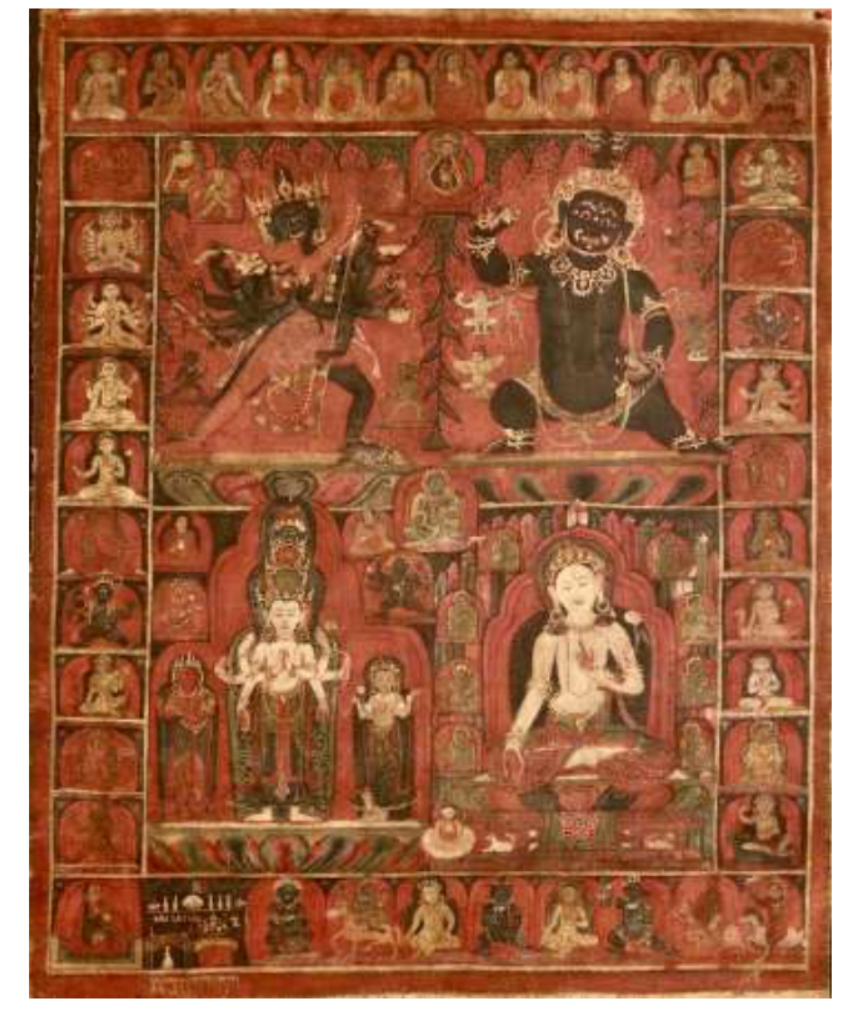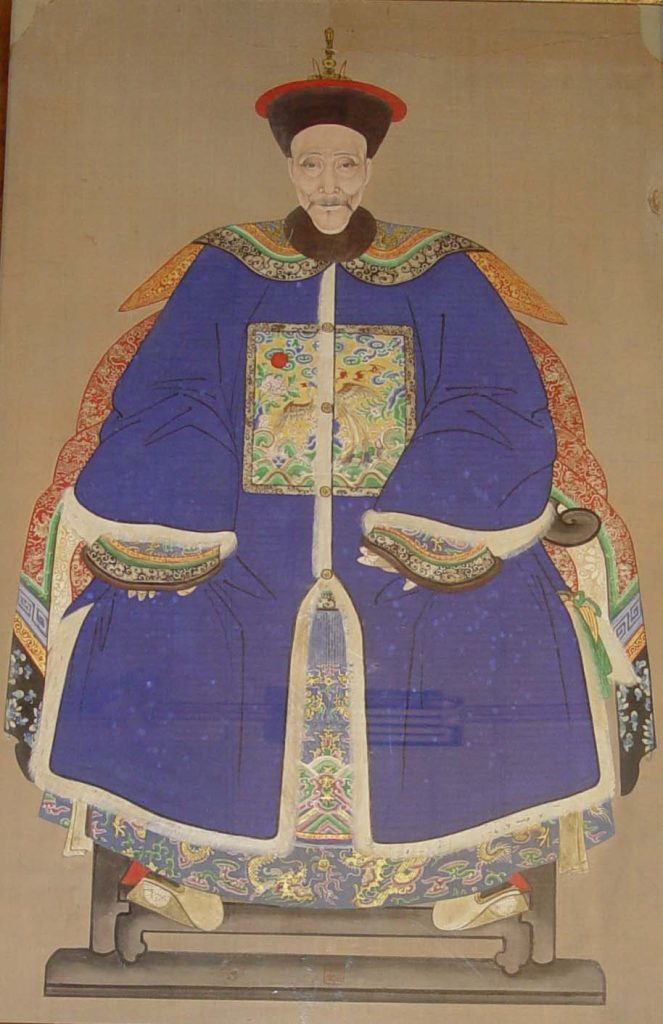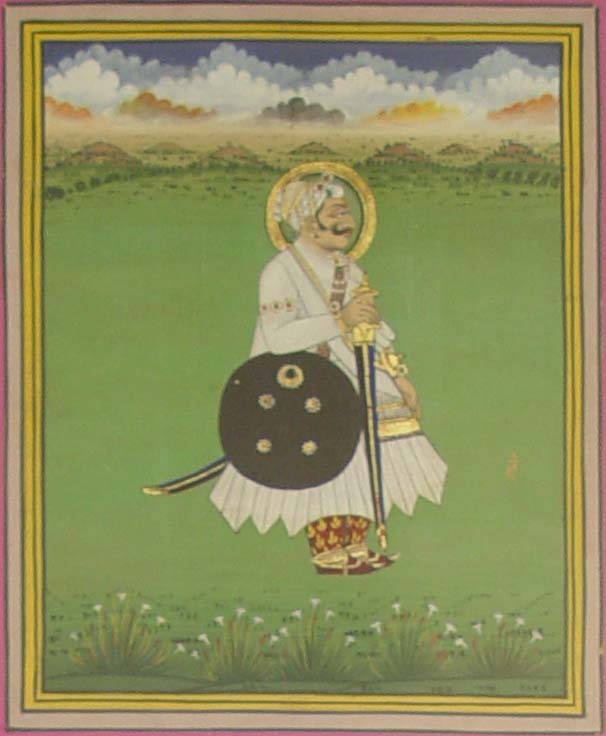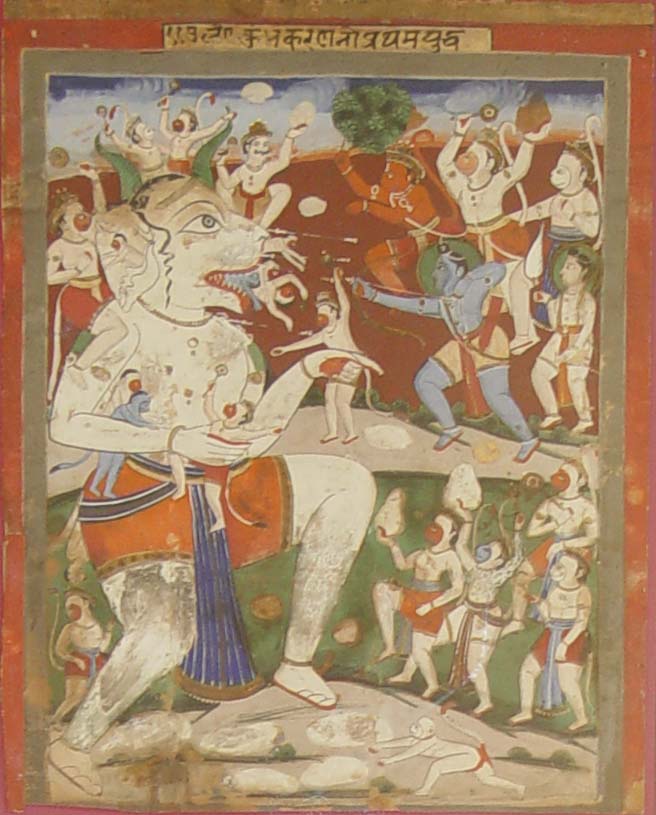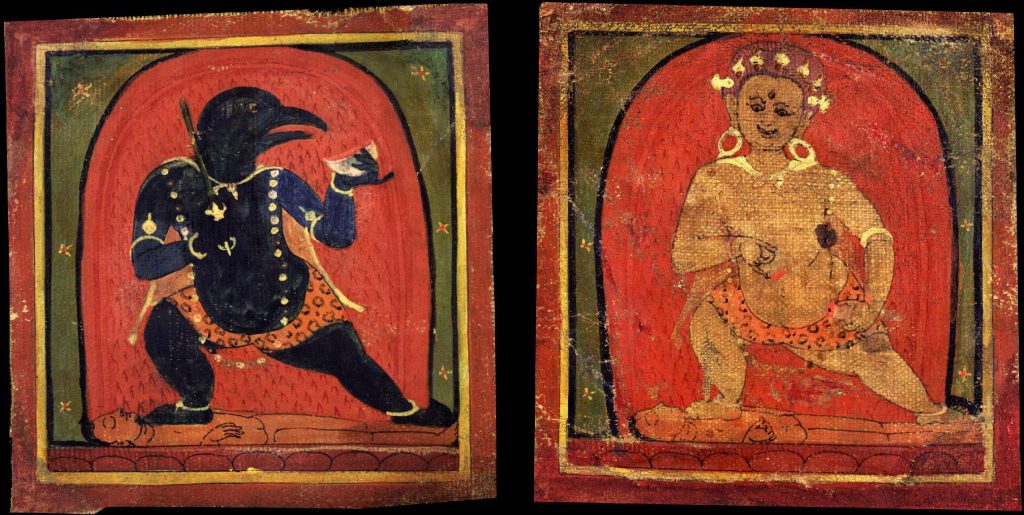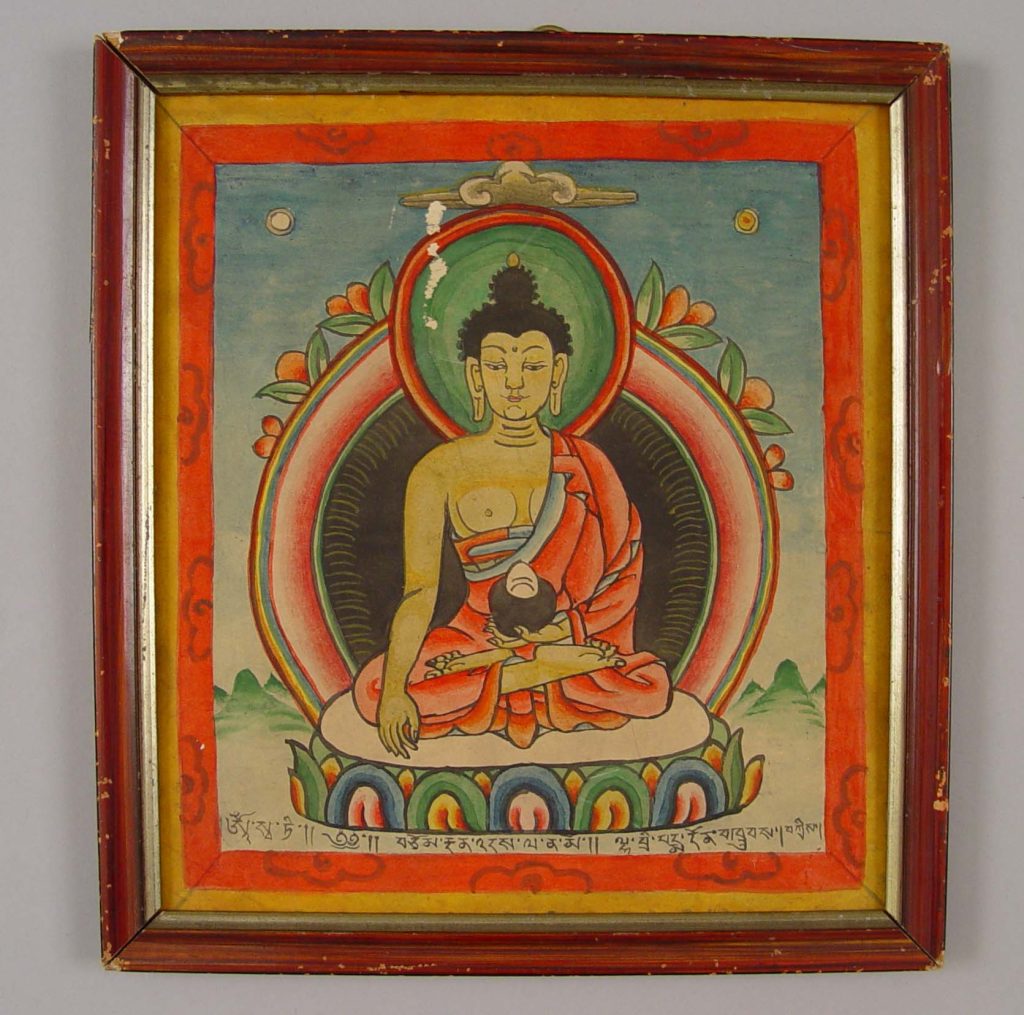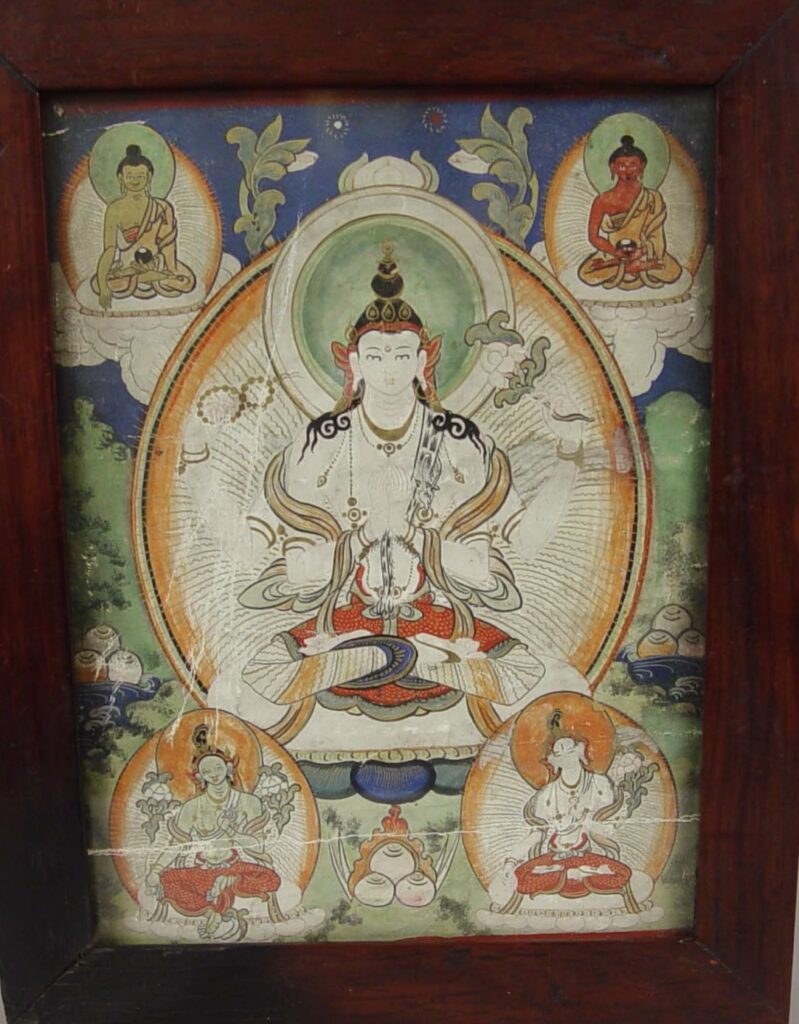The composition of this unusual thangka is notable for the separate shrines devoted to four individual deities. The blue, four-headed and twelve-armed meditation deity Chakrasamvara appears in the upper left of the central panel with his red consort Vajravarahi. Their union symbolizes the transcendence and the fusion of Buddhist wisdom and compassion. An arch of flickering flames depicted behind the couple denotes pristine awareness. The numerous hand-held ritual implements signify the steps and actions on the path to awareness. The Brahmanical deities Bhairava and Kalaratri, representing nirvana and samsara, are trampled underfoot on the lotus base, denoting Chakrasamvara’s mastery over the dualism of mundane existence and spiritual liberation. The four Yogini of Great Bliss (mahasukha) appear within the flaming aureole.
To the right of Chakrasamvara, the wrathful blue protector deity Vajrapani strides to his right in a militant posture (pratyalidha), holding a diamond scepter (vajra) in his raised right hand and ritual bell (ghanta) in the left, wearing a tiger-skin loincloth, golden crown and jewelry, and a long necklace in the form of a snake with its head entwined with its tail. Vajrapani, the protector of Vajrayana tantras, is intimately associated with Garuda, the ancient Indian mythological winged guardian and destroyer of naga snakes, and five multicolored garudas appear within the flames behind this deity. Guru Rimpoche and two Buddhas are depicted behind the composition of the flaming aureoles of Chakrasamvara and Vajrapani.
Eleven-headed Avalokiteshvara stands in the lower left quadrant of the painting, with his faces arranged in ascending tiers, surmounted by the head of red Amitabha, the bodhisattva’s spiritual progenitor. Avalokiteshvara is accompanied by two four-armed bodhisattvas standing to each side in front of a lobed arch, with tantric deities to the left and right above and two seated lamas facing inwards at the apex of the shrine, both with hands in the teaching posture (dharmachakra mudra).
White Tara appears at the lower right of the painting, seated on a lion throne. A small figure of a Tibetan monk seated on a lotus flower is depicted just in front of her throne. Tara is surrounded by eight emanations—the protectors of the ‘eight fears’—appearing within a multicolored mountain setting.
An Indian pandita in a red cap and two mahasiddhas appear in the upper register together with Tibetan monks. Various deities together with mounted Vedic gods of the directions are depicted either side. A lay priest appears in the lower left of the picture performing a consecration ceremony next to an array of ritual objects, with a row of offerings on tripod stands depicted on the lower margin. Protector and wealth deities in the lower register include Panjarnata Mahakala, Sri Devi, Jambhala, Kala Jambhala, Kakamukha Mahakala, and mounted mountain deities subdued into the service of Buddhism by Guru Rimpoche. The prominent presence of Guru Rimpoche above the four principal deities might suggest that this rare painting is affiliated with the Nyingma order of Tibetan Buddhism.

